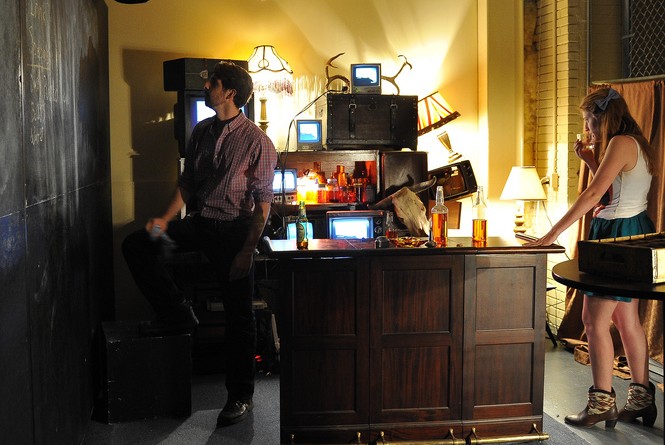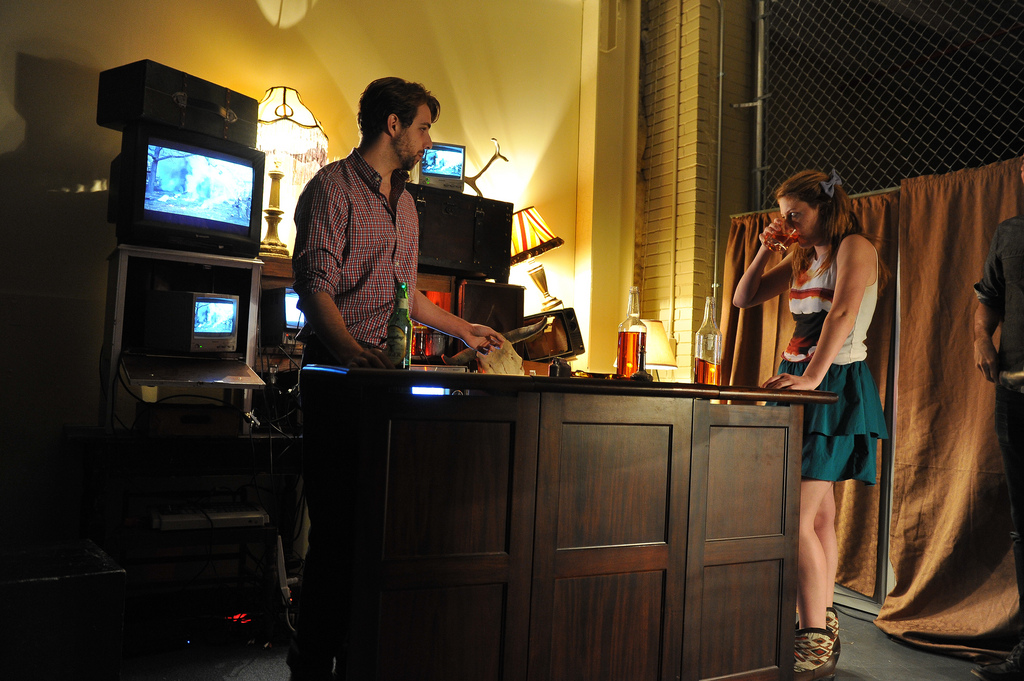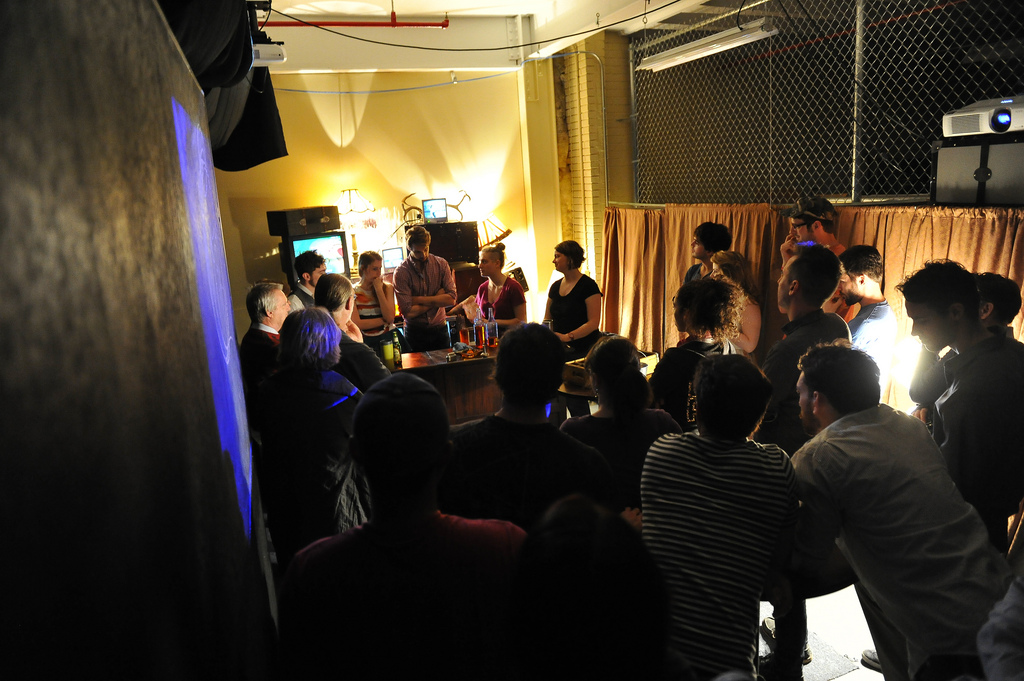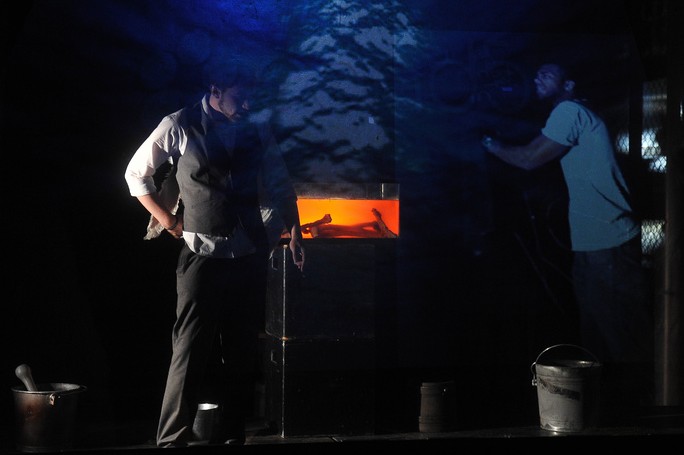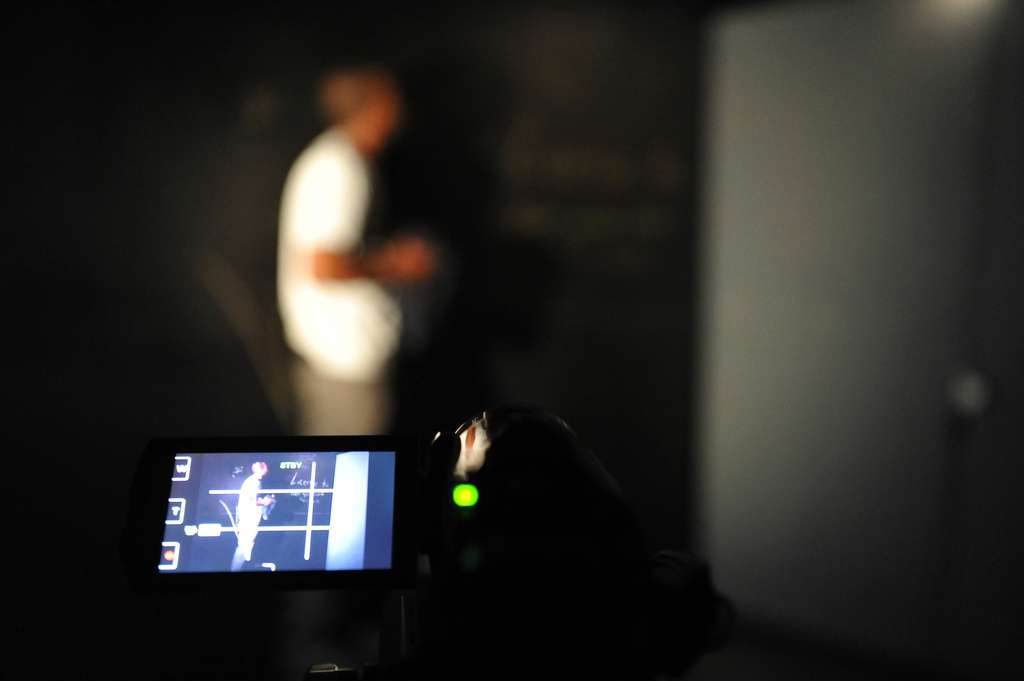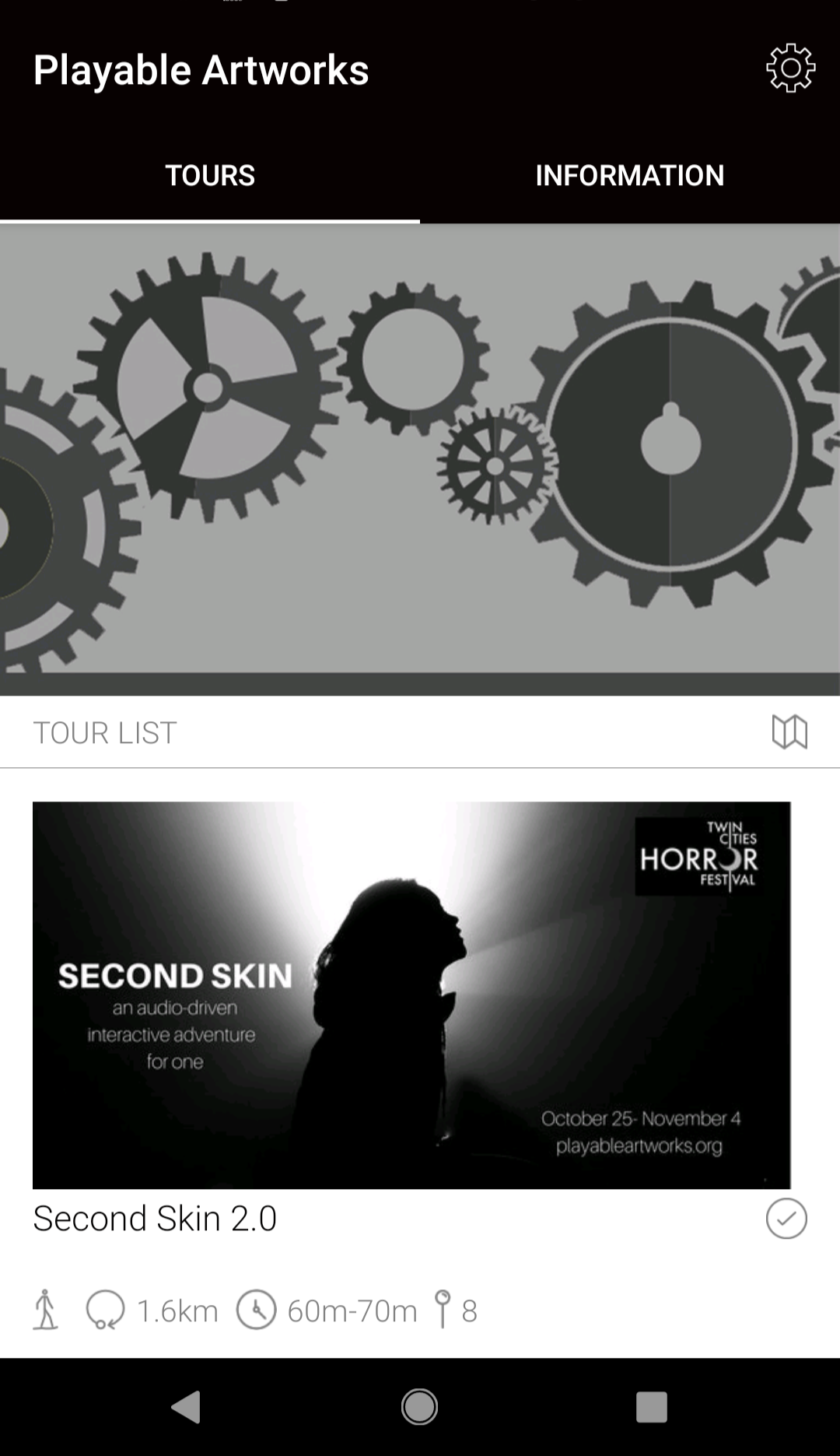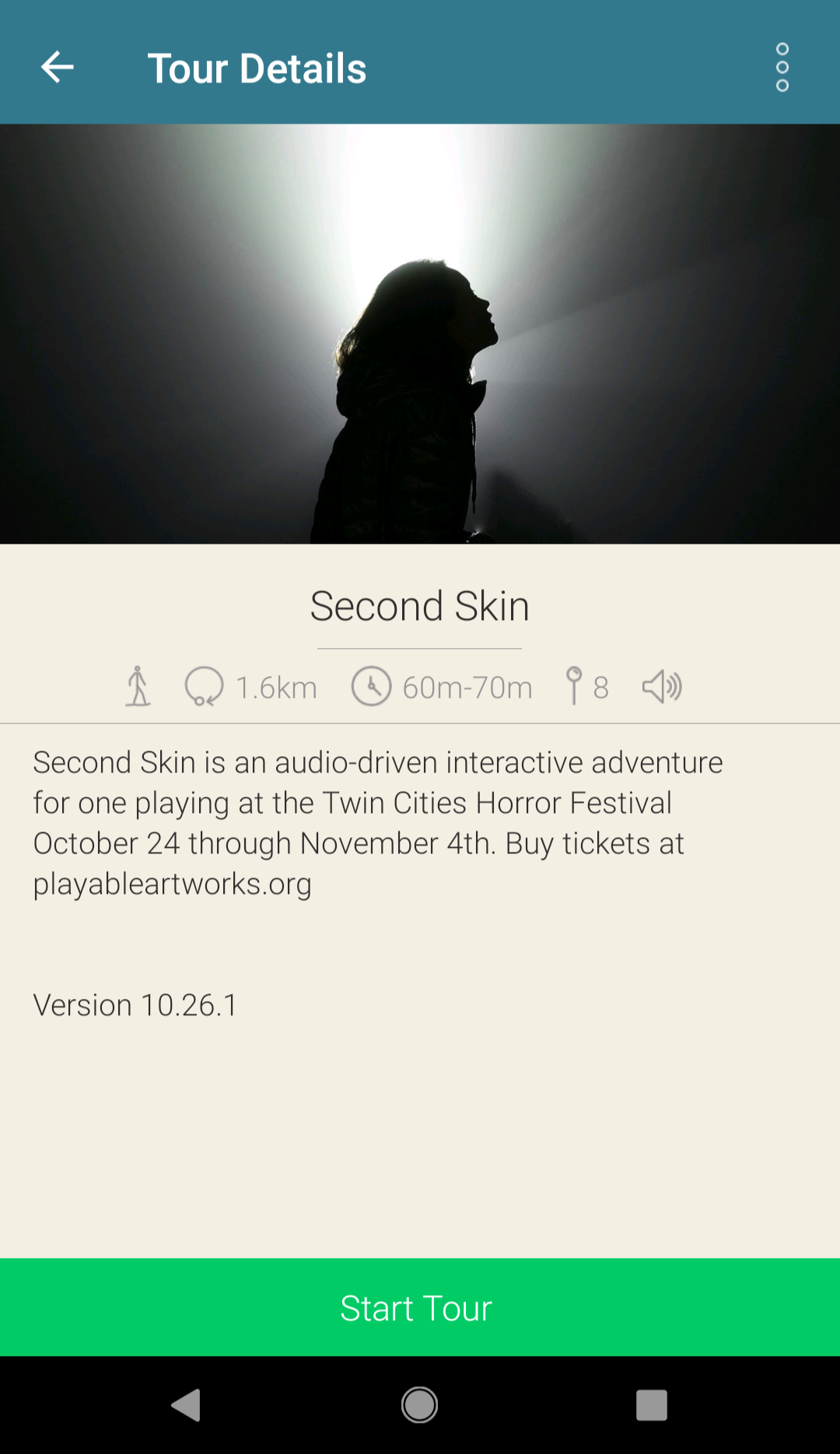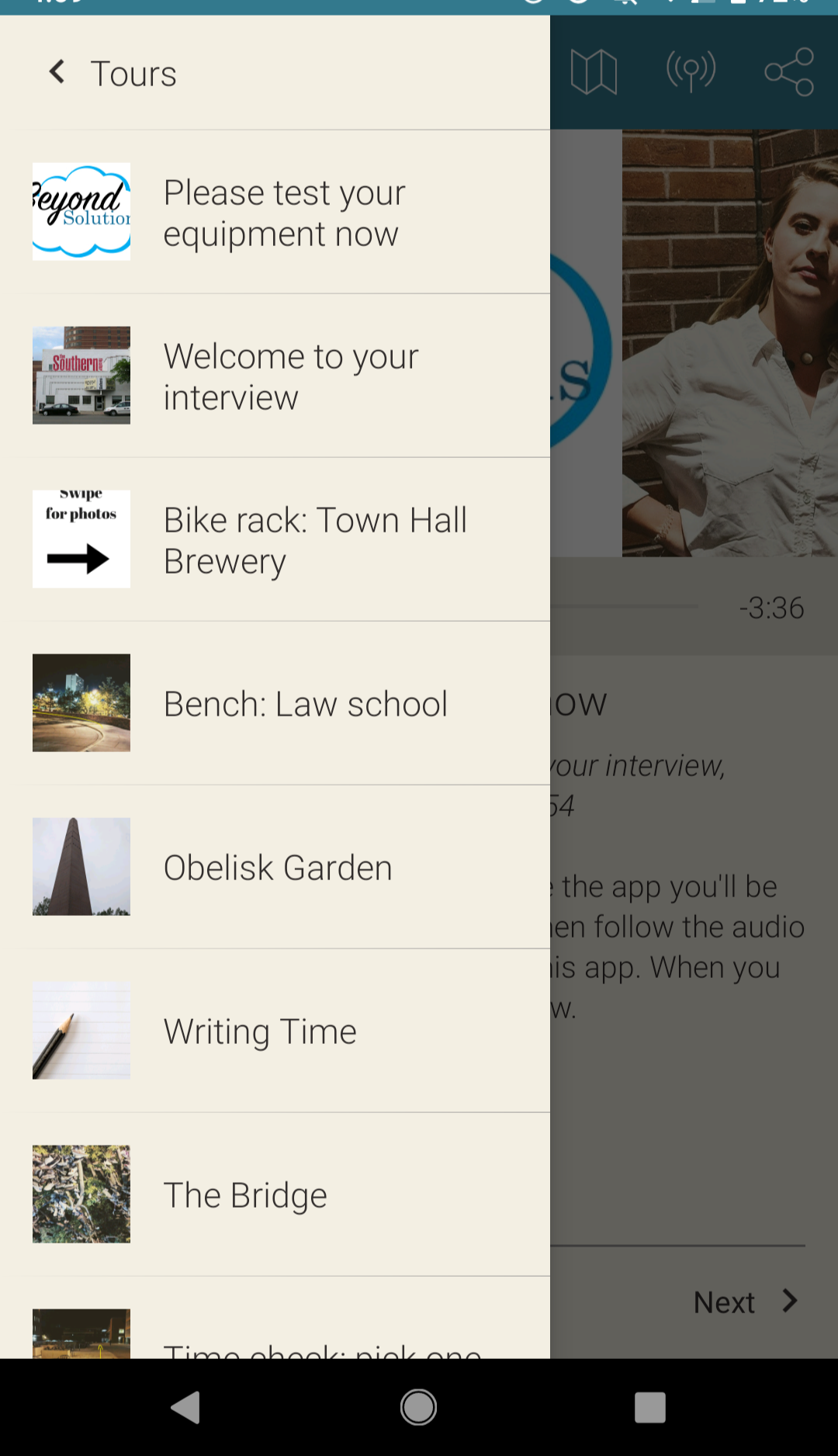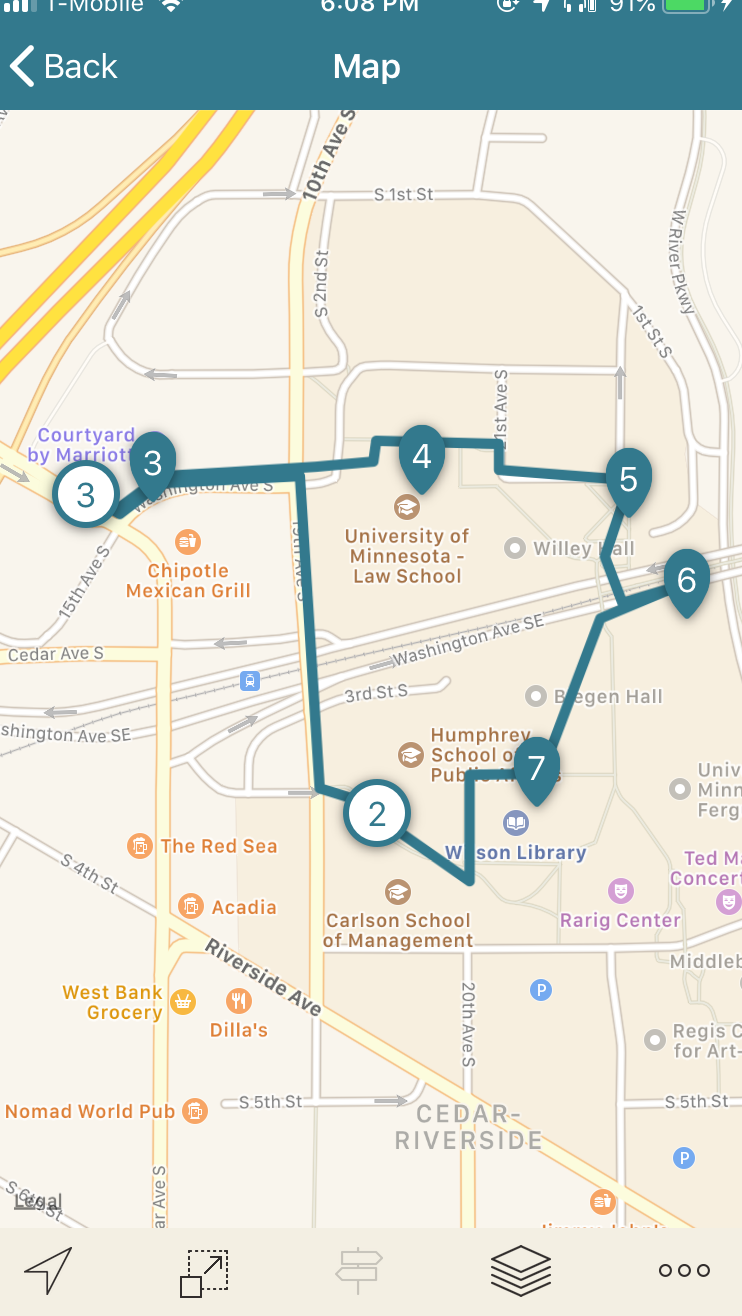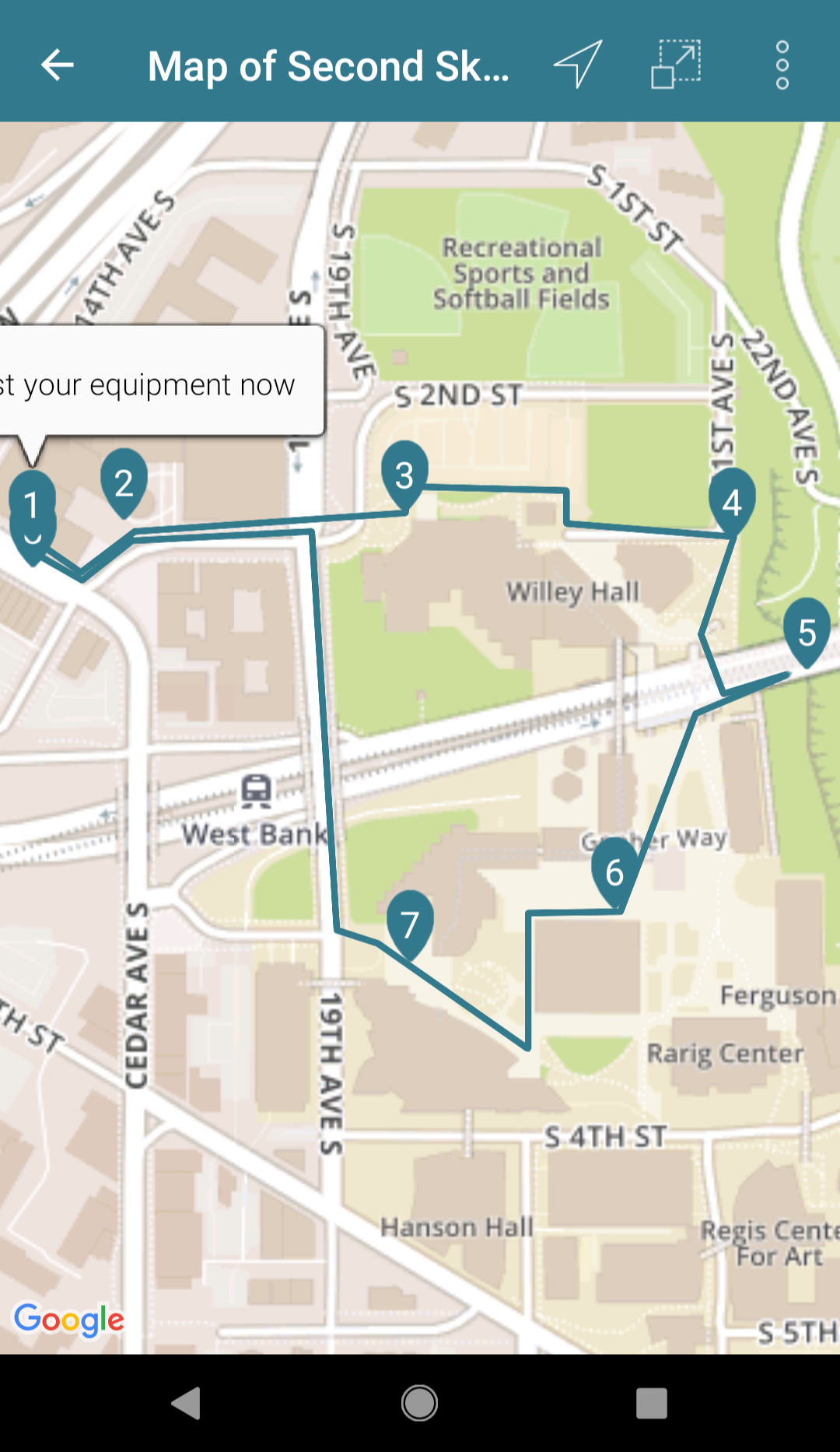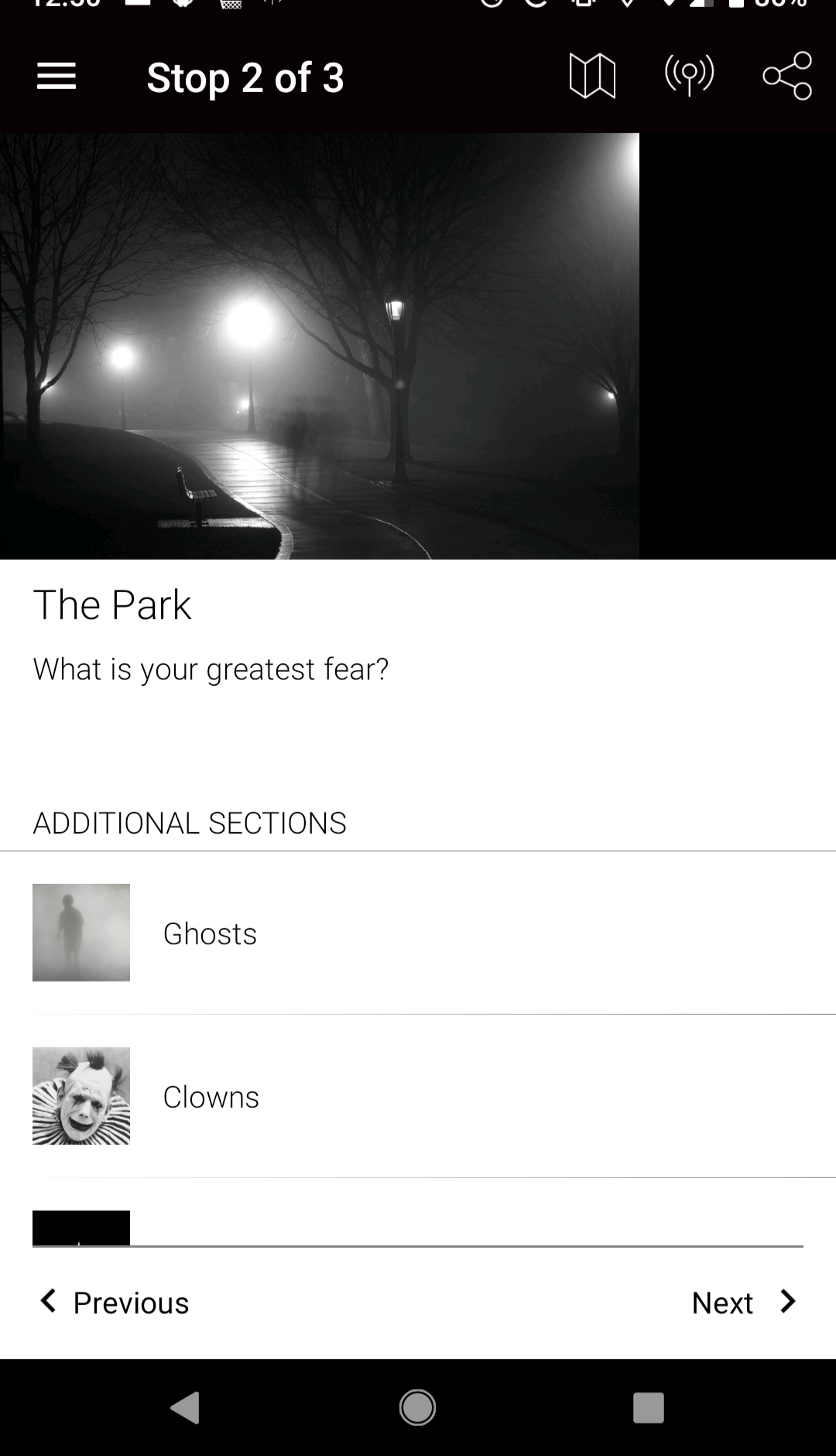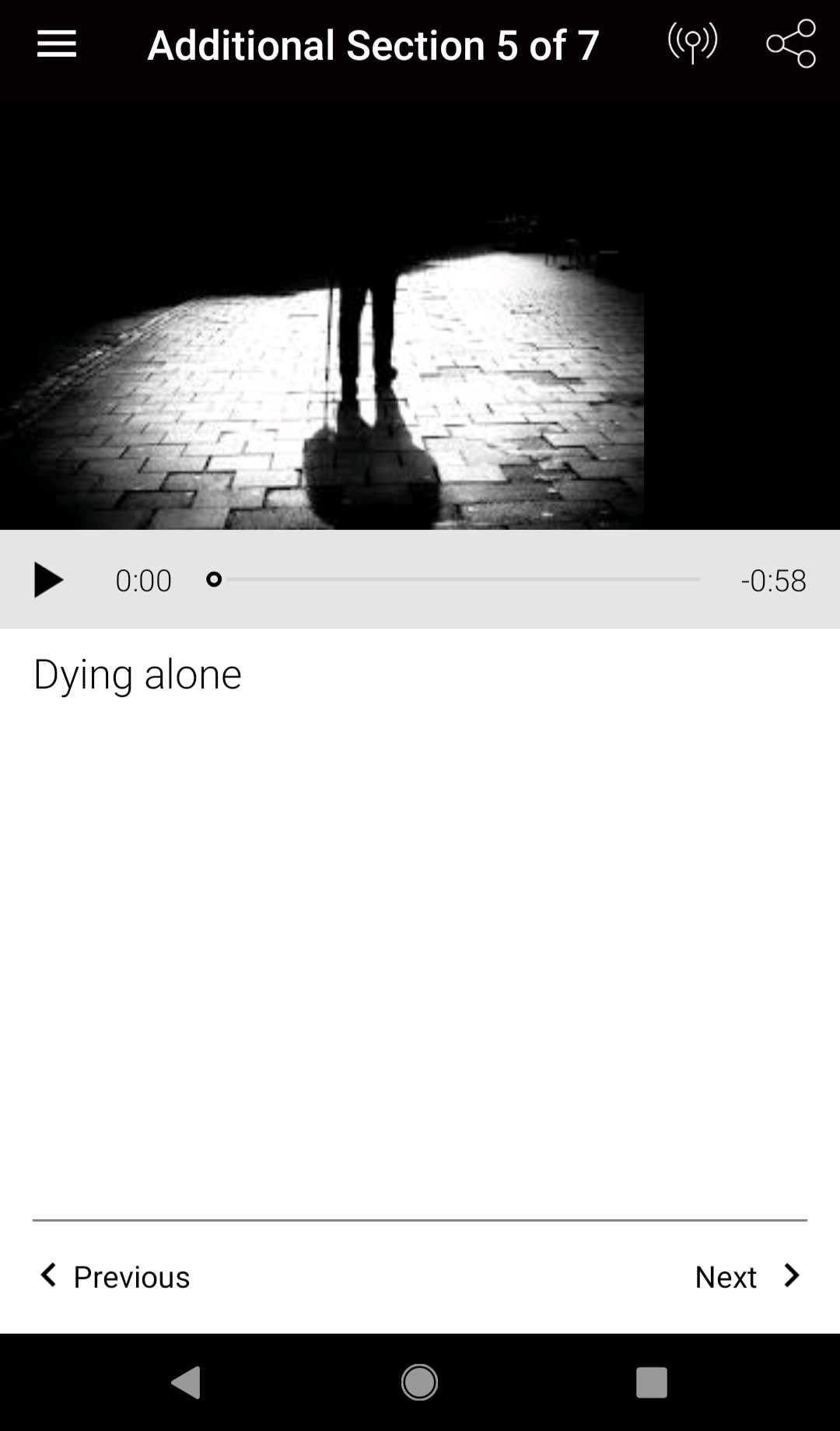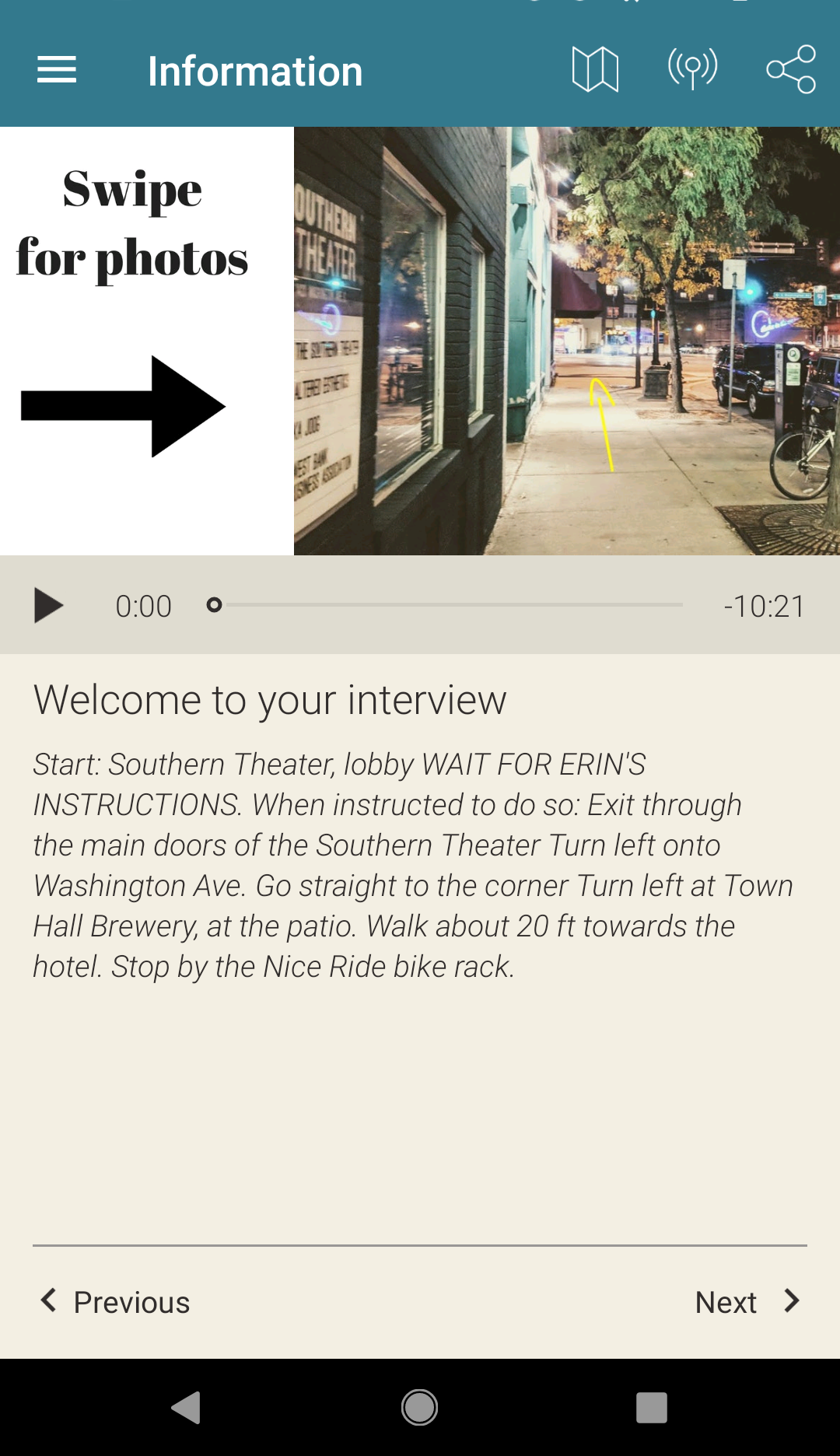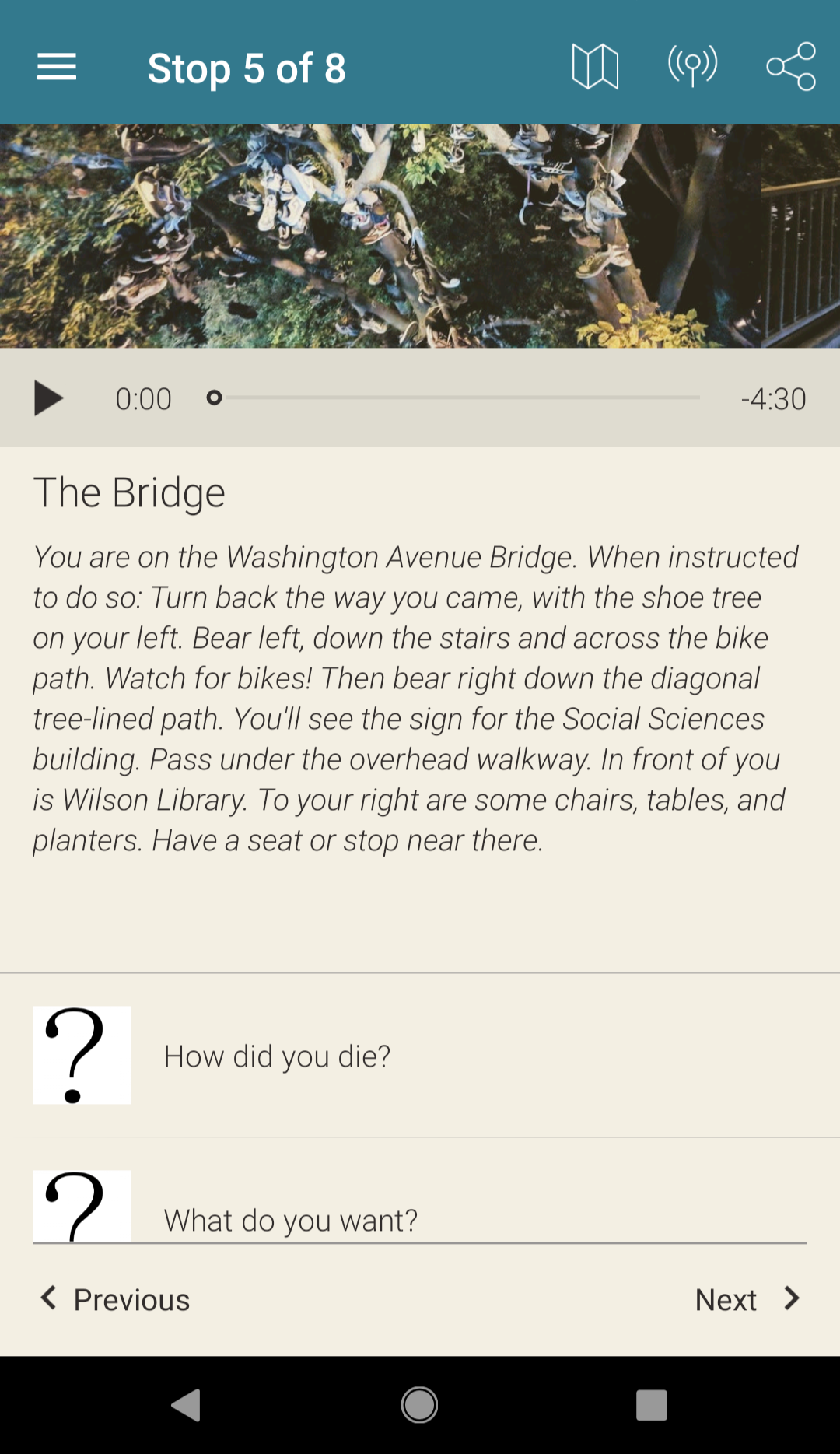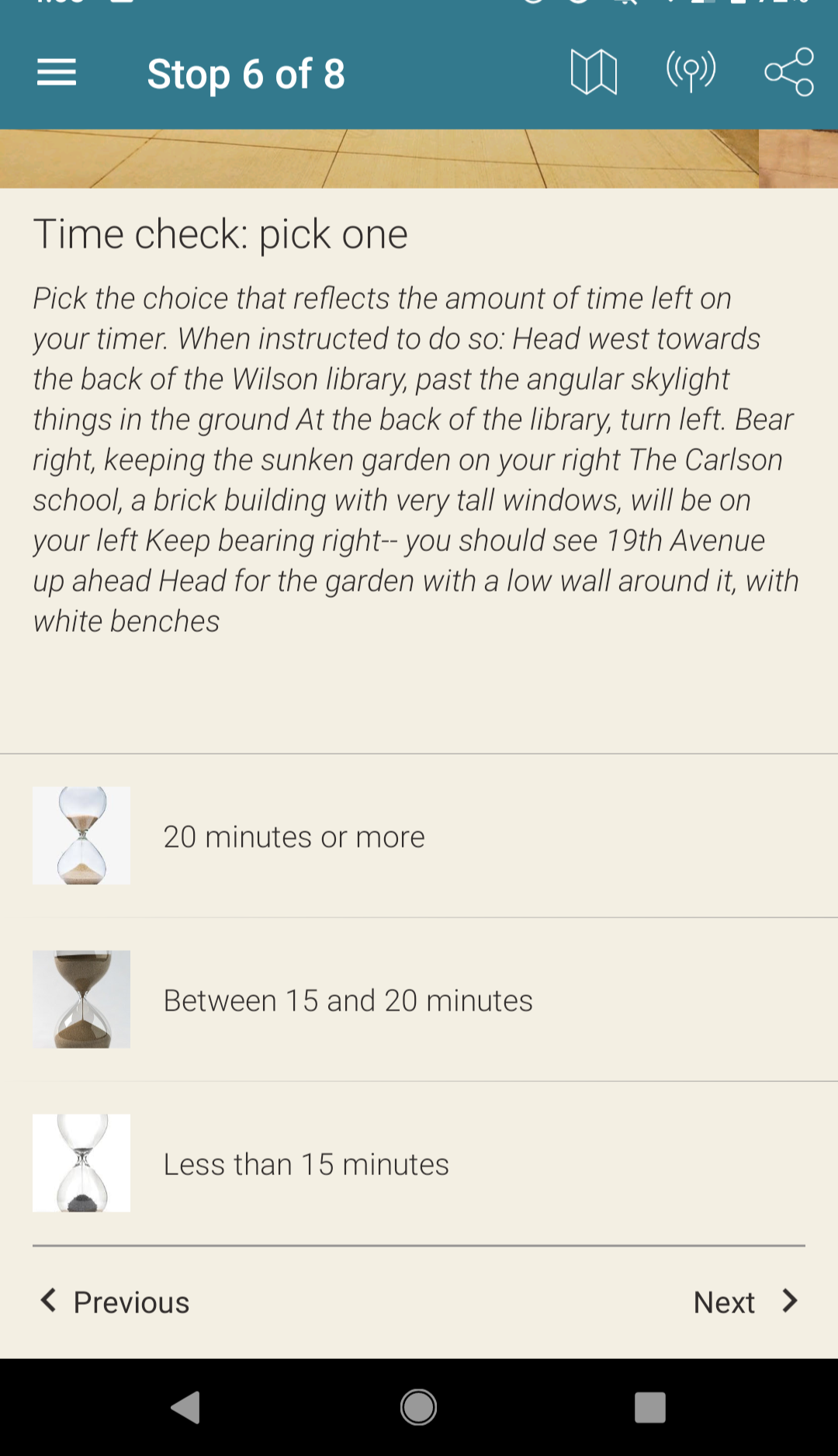App-delivered Interactive Performance
For Second Skin, I worked with My Tours to produce a custom app for Playable Artworks. Within this app, I modified a guided tour format to serve as a narrative structure for an interactive performance.
At the beginning of Second Skin, users are given a quick introduction to the app with recorded audio, screenshots, and instructions on how to navigate the experience. This intro is combined with an in-person orientation when the user arrives at the venue, creating an opportunity to clear up any questions, or to give additional help to less phone-savvy users.
Each tour is divided into stops, which are displayed in an in-app map function. Photos of the route as well as written directions provided additional help for those not map-savvy. The app has geofencing capabilities, but the target areas are relatively large, making them difficult to use in a tour route of only a mile.
A table of contents also allows users to quickly navigate between scenes as needed. Users made choices in the narrative by selecting sub-scenes from a menu within each stop. Because of the structure of the app, only one level of sub-section is allowed, and so further branching of the narrative must be handled differently.
iPhone and Android versions of the app differ in a few significant ways, which requires giving users extra instructions, as spoken text in the show repeatedly indicated what buttons to select for certain actions. These discrepancies are on a list of future fixes for the My Tours staff.
Real-time Interactivity
For Consumed at the Twin Cities Horror Festival, the technical team created a real-time system that allowed characters to interact with audience members throughout the performance. Using their cell phones, audience members were able to ask questions and get information from characters they encountered and even some they never met. Smart phone users were able to access additional information in the form of audio transcripts, extra evidence, and special materials that supplemented the plot of the show.
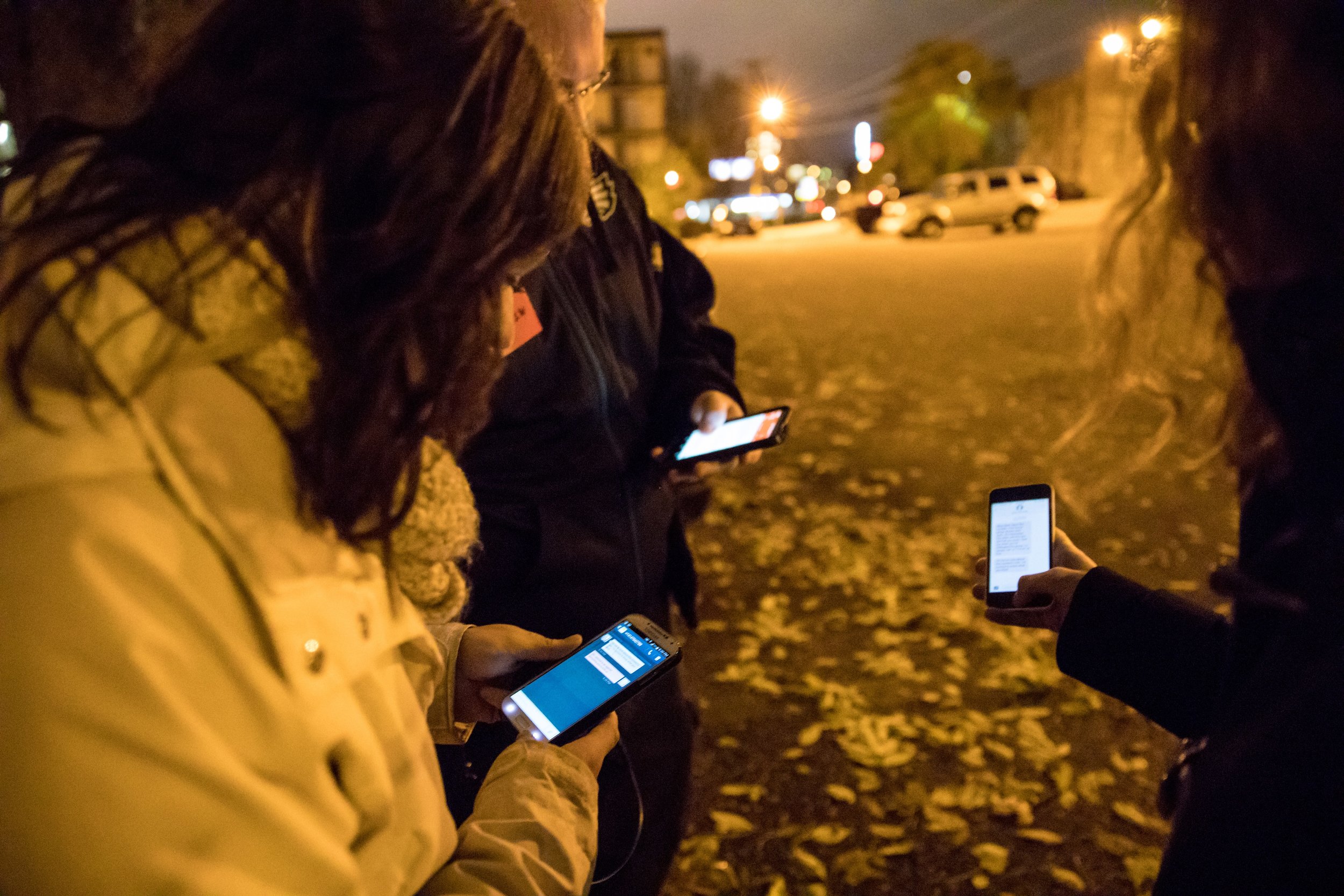
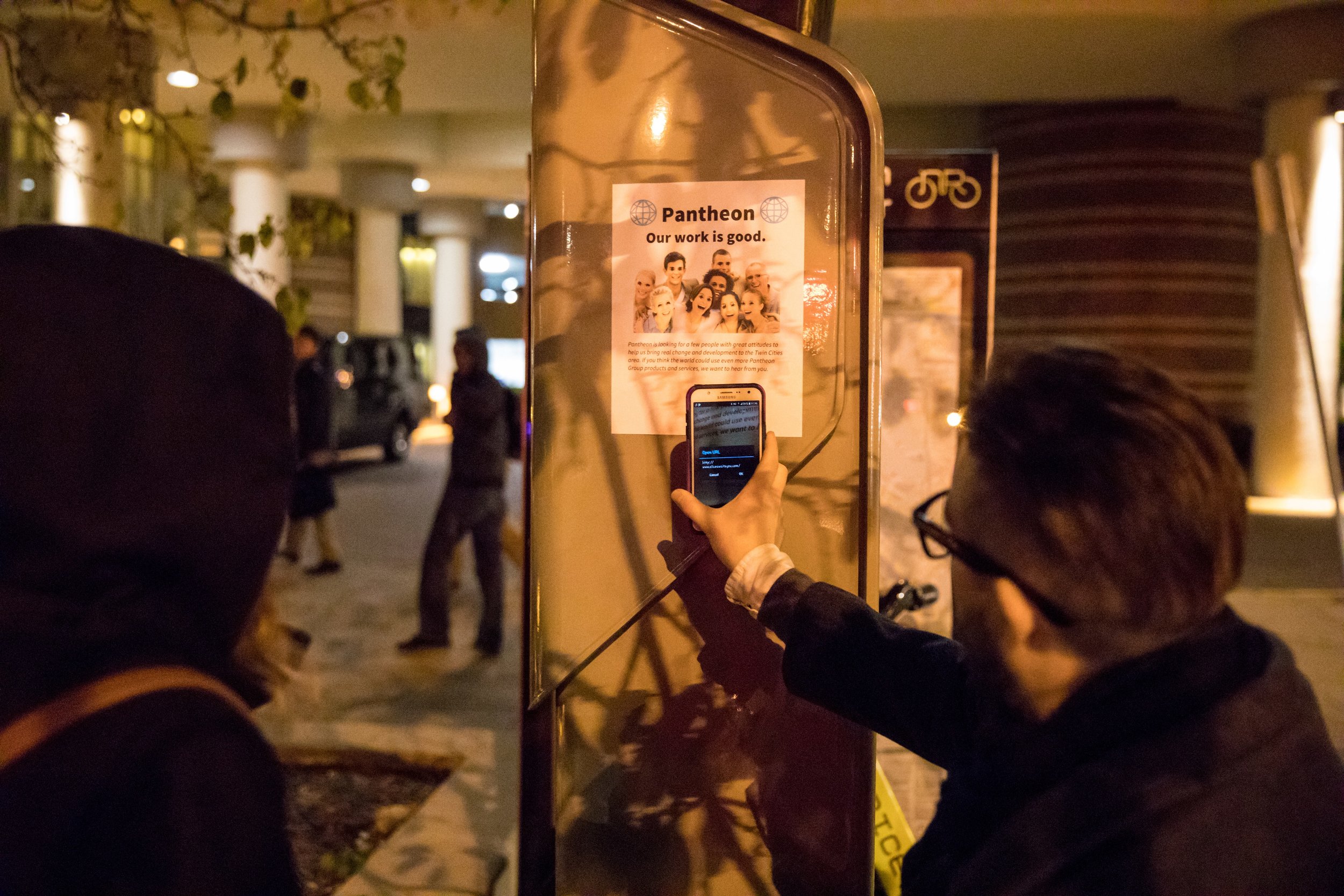
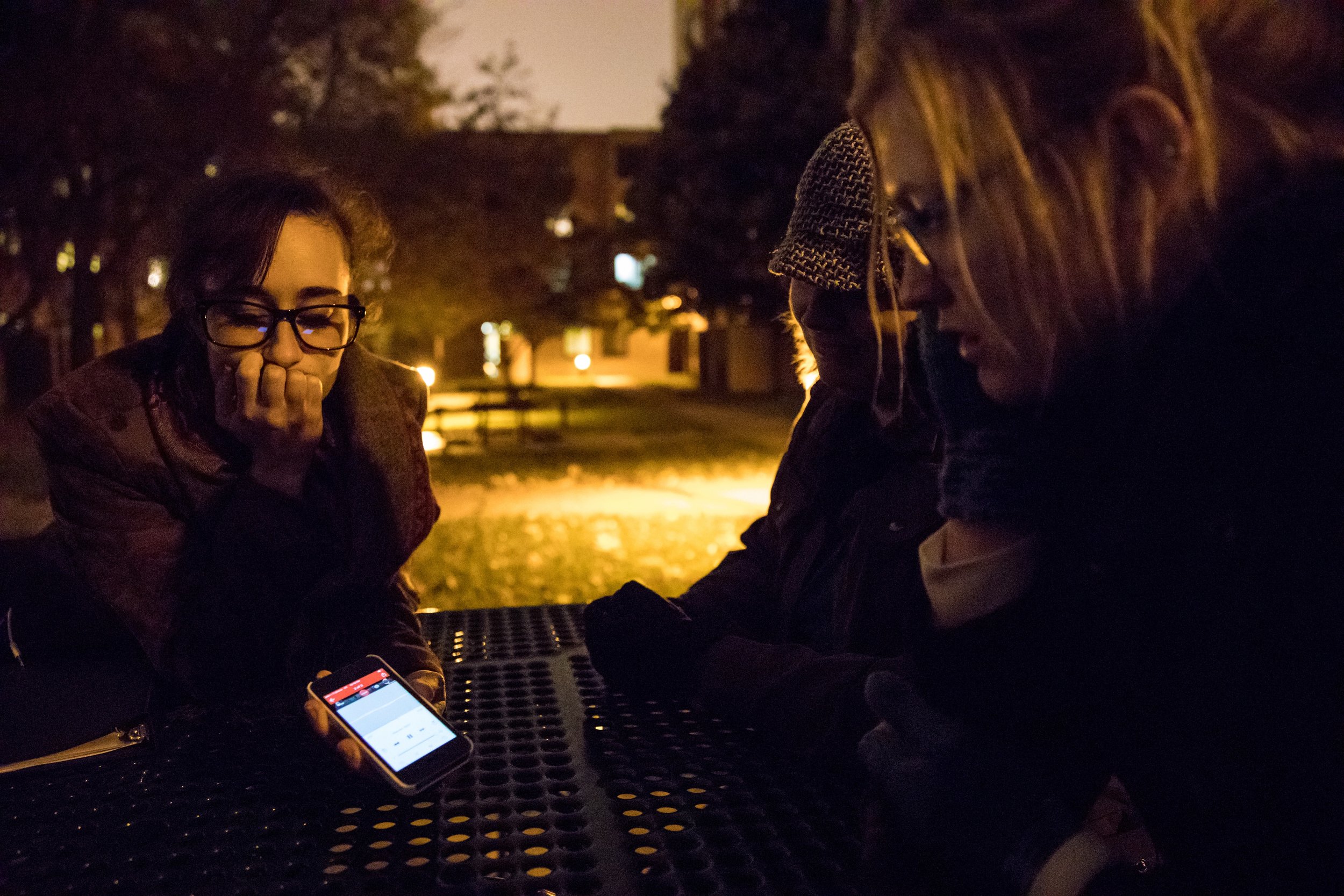
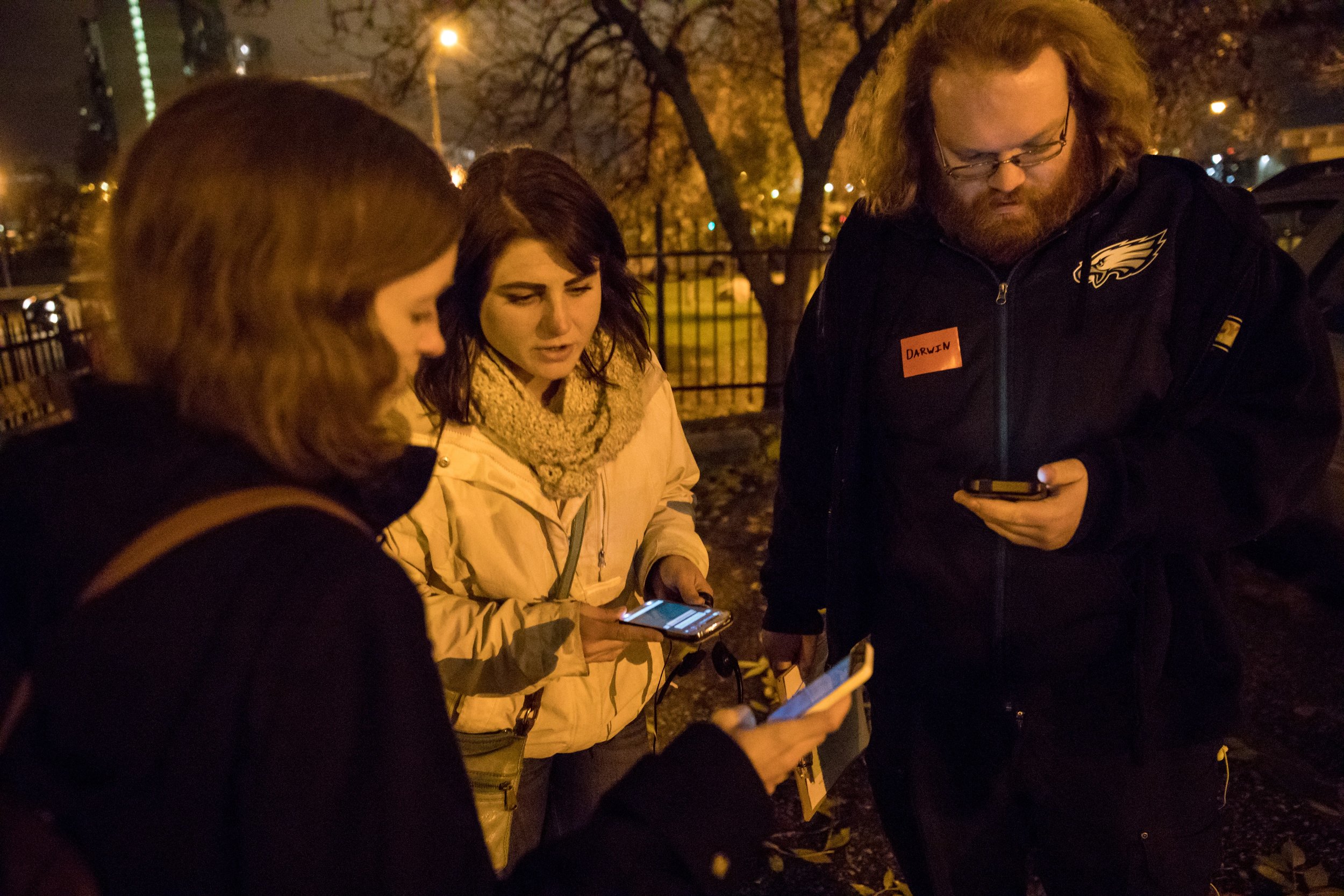
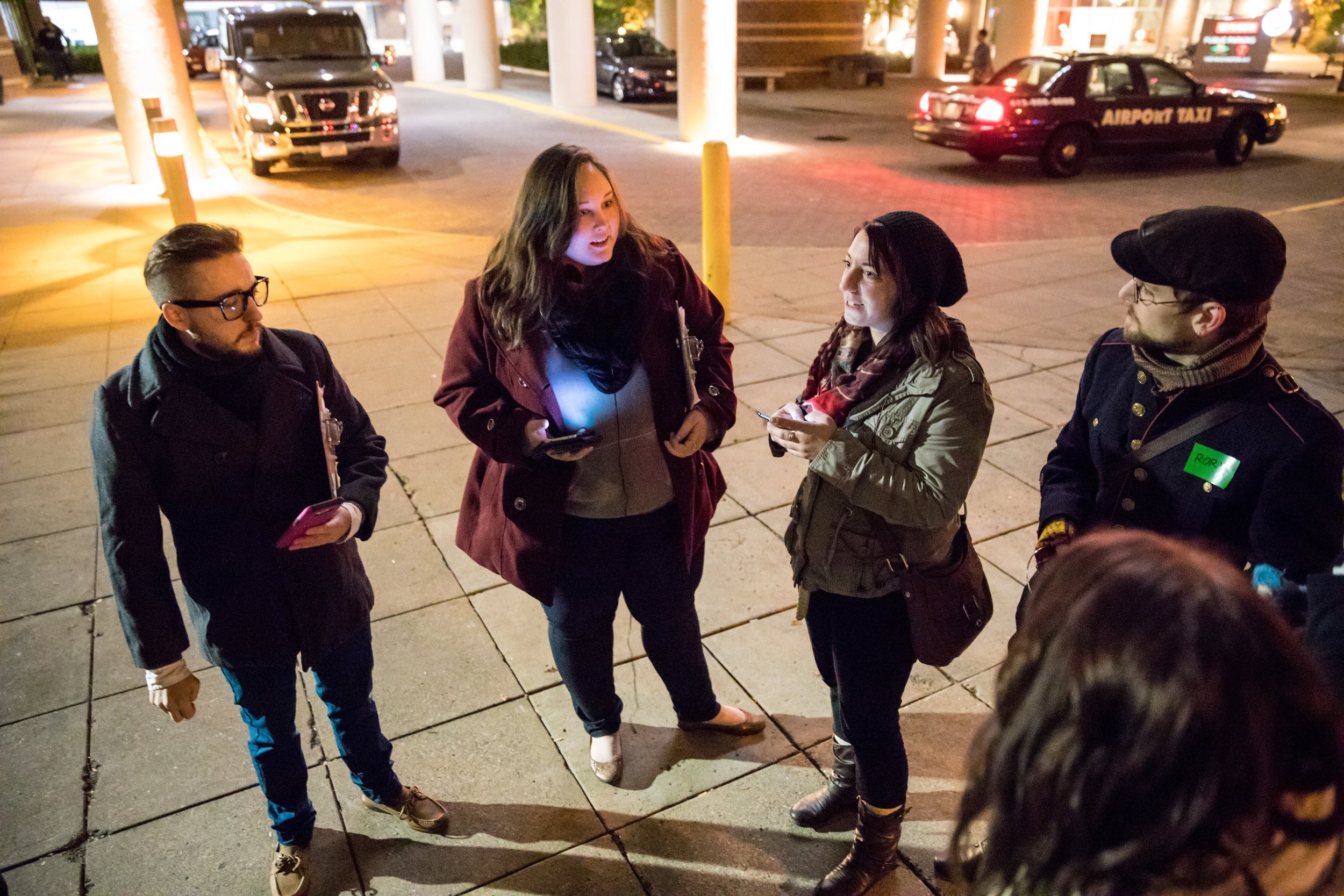
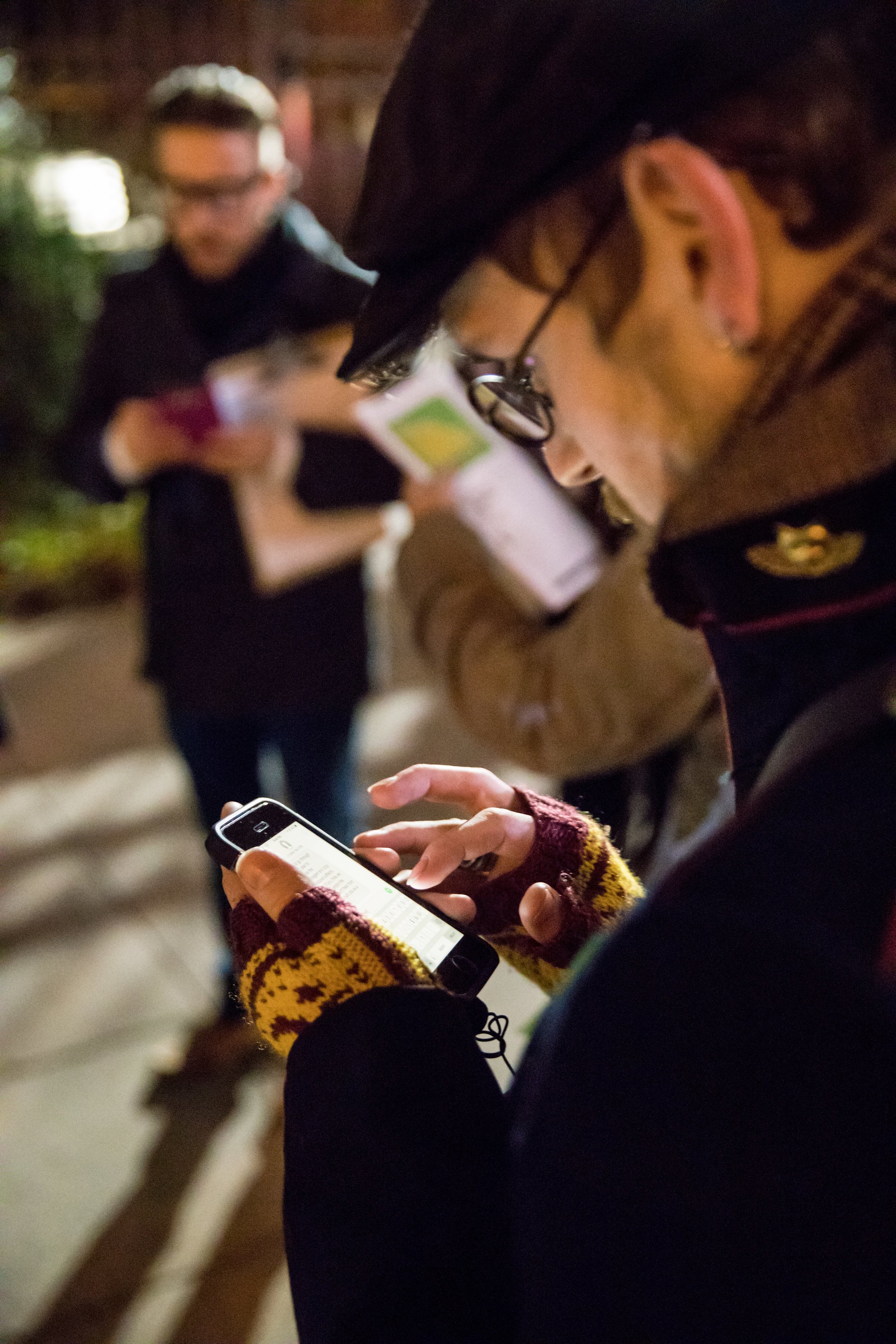
Future Stages
For Carnegie Mellon's Future Stages program, directors, designers and performers collaborate to interpret texts using media technology and nontraditional staging. In the spring of 2013, I directed selections from Caryl Churchill's fantasy mixing urban life and ancient myths, The Skriker.
Designer Molly Hellring and I created an environment shared by both performers and the audience. Two chambers held two different scenes, performed simultaneously, and the design of each incorporated elements of the other to link the two wolrds. Performers led the audience groups through the environment at timed intervals to witness different scenes. The finale involved the physical breaking down of barriers to bring the scenes into a single space and re-unite the characters.
The first space, the bar, featured a scene of the title character, the ancient fairy known as the Skriker, disguised as a woman. She inquires of the bartender how television works, and threatens him when he is unable to explain its secrets. We used a wall of televisions looping stock footage spliced with the Skriker (on a news broadcast, as a weather girl, in a commercial) to represent the Skriker's invasion of the normal human world. The bartender attempts to diagram the workings of television with chalk on the walls of the bar, only to have his writing eradicated by projected images of the Skriker's furious, distorted face.
The second space, the underworld, featured an underwater world in which the magical Skriker felt at home. Rusty water drips from overhead into dozens of buckets. A glowing fish tank contains bones and red water. Water shimmers in mid-air (thanks to projections on the Pepper's Ghost apparatus). Josie, who's been the Skriker's prisoner for years, appears (via live video feed) wiping away pieces of her memory-- chalk-written lines from the play on a wall--at the Skriker's behest.
With the help of Pepper's Ghost and Isadora software, we provide the illusion that The Skriker manipulates Josie's image: shrinking her, moving her around the room, and growing her again. At last, Josie resolves into reality: her mediatized image melts away and the live actor stands in its place.
Director: Margo Gray
Designer: Molly Hellring
Performers: Lachlan McKinney, Brian Morabito, Alexandra Spieth, Marquis Wood
Additional technical support: Buzz Miller
